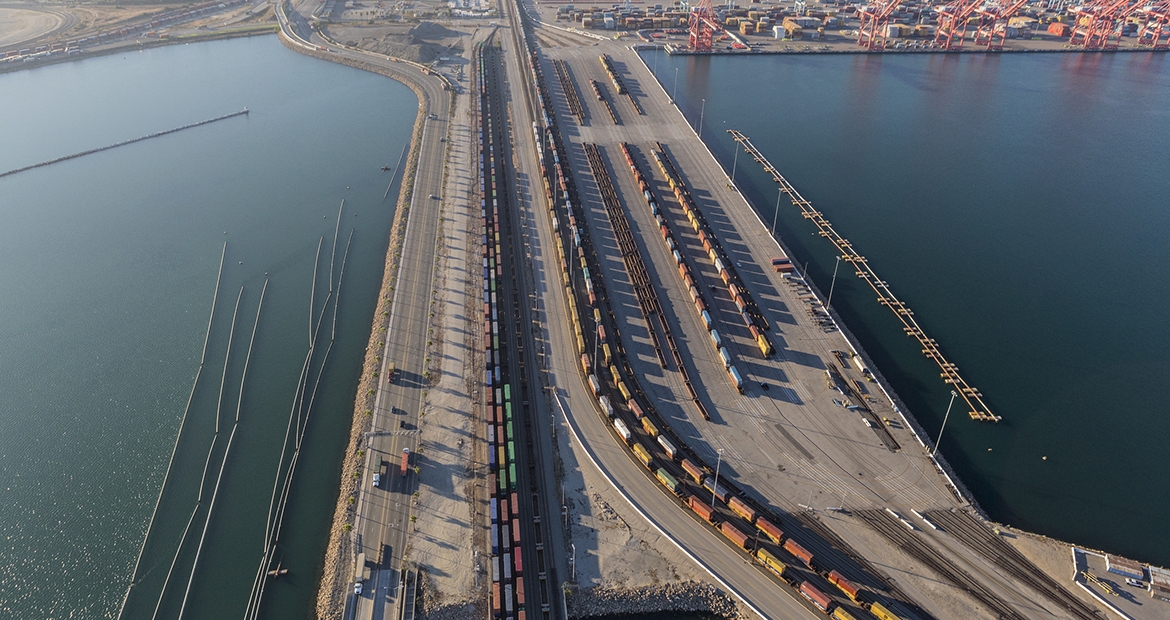Researching clean power solutions at the Port of Los Angeles
Calling the Port of Los Angeles "busy" is an understatement...
By Katie Zarich, Manager of External Communications

Its 43 miles of waterfront is described as the leading gateway for international trade in North America. In 2018, 9.5 million containers – the highest container volume at a port in the Western Hemisphere ever – moved through the port.
Cummins has helped its customers focus on improving air quality at the ports by providing the latest diesel and natural gas technologies that have dramatically reduced emissions. And engineers at Cummins are researching how electric powertrains may play a significant role in achieving these goals in the future.
One of the challenges with implementing electric technology at ports is charging infrastructure. An innovative U.S. Department of Energy funded project, led by Wireless Advanced Vehicle Electrification (WAVE), is focused on developing and deploying high-power extreme fast charging.
WAVE will partner with Cummins Inc., Schneider Electric, Utah State University and Total Transportation Services Inc. (TTSI) to develop, deploy and demonstrate a first-of-its-kind 500kW “XMEG” wireless inductive charger to support battery electric drayage trucks. The solution leverages Utah State University technology for a direct medium voltage grid connection to greatly reduce the cost, size and complexity of installed XMEG systems.
WAVE technology transfers power through the air, from an embedded charging pad placed in the pavement to a receiving pad mounted on the vehicle's undercarriage, reducing the amount of on-board storage needed to operate. The innovative WAVE extreme fast charger will allow TTSI’s drayage trucks to charge during normal cargo loading and unloading stops. Combined with the groundbreaking improvements enabling extreme fast charge, this “top-off” charge capability will significantly extend the uptime of the trucks, eliminating battery range concerns and enabling them to complete the rigorous duty cycles associated with around-the-clock freight operations.
“This is a critical technology because battery electric commercial vehicles will play an important role in improving air quality in cities and ports, but charging infrastructure can be a barrier to their adoption,” said Michael Masquelier, WAVE’s Chief Executive Officer. “WAVE looks forward to a fruitful partnership with DOE and we are proud to help make zero-emission freight truck operations a reality.”
Utah-based WAVE will deploy and field test the system this year and next. The new system will be installed at TTSI at the Port of Los Angeles.
This project will showcase the technologies enabling the goals for continued improvement of air quality for ports. Cummins is integrating an electric powertrain that will successfully meet the operational needs of this demanding application at the Port of Los Angeles.
“We are pleased to work with these partners and develop our experience with extreme wireless fast charging, a key technology to enable broader adoption of electric powertrains,” said Wayne Eckerle, Vice President of Research and Technology at Cummins. “Our goal is to bring multiple clean power solutions to markets to help improve the environment while powering our customers’ success.”
Author Profiles

Katie Zarich, Manager of External Communications
Katie Zarich is Manager of External Communications for Cummins Inc. She joined the Company in 2015 after more than a decade working in government and the nonprofit sector. katie.zarich@cummins.com
Related Tags